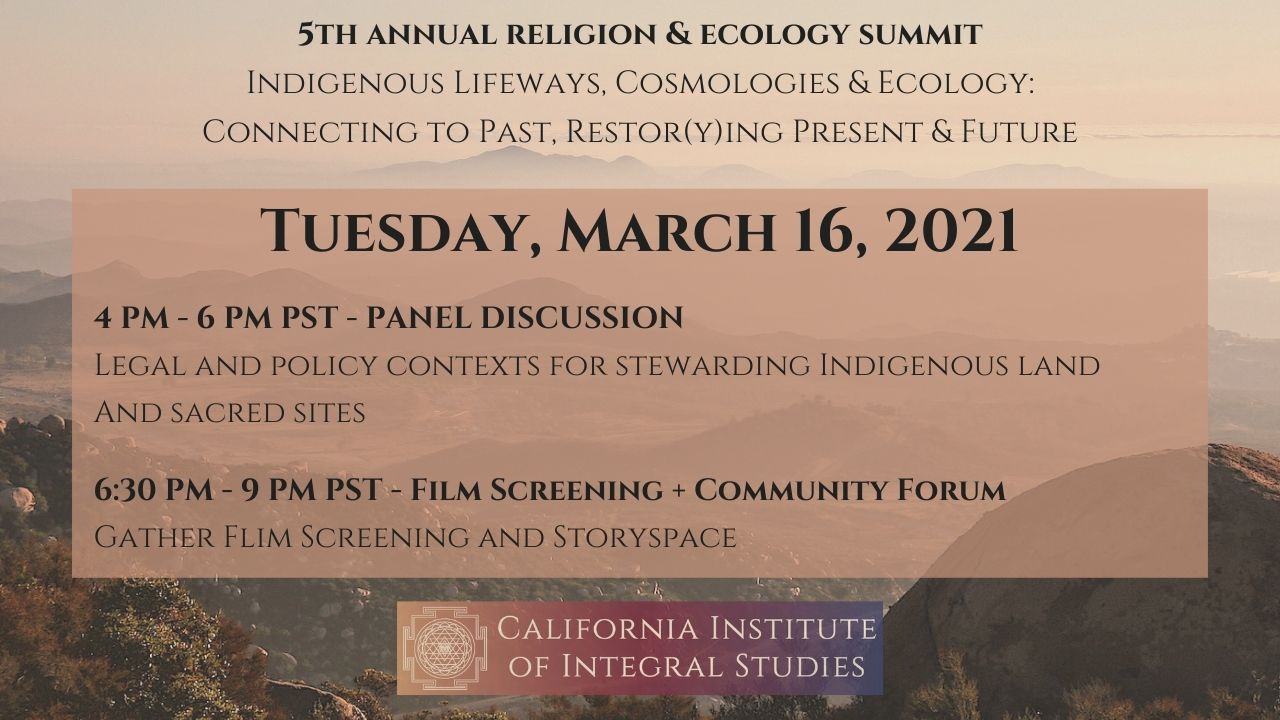Panel Title
Legal and Policy Contexts for Stewarding Indigenous Land and Sacred Sites
Loading...
Presenter Bio
Postdoctoral Research Scholar with the School of Sustainable Engineering and the Built Environment at Arizona State University
Dr. Carrie Nuva Joseph (Hopi) is a Postdoctoral Scholar within the Department of Sustainable Engineering and the Natural Environment at Arizona State University. She received her Ph.D. from the University of Arizona’s Department of Soil, Water, and Environmental Science. She specializes in the chemical and biogeophysical relationships between natural and engineered landscapes impacted by hazardous waste and human disturbance. Her interdisciplinary efforts include research on climate change impacts, human exposures to anthropogenic contaminants, hydrology, and water resource management in Indigenous communities. Using a holistic lens, Dr. Joseph’s work informs decision-making in science and policy, to advance social equity and data sovereignty efforts in marginalized populations. Dr. Joseph is a recipient of numerous honors and award including her previous department’s 2019 Outstanding Dissertation Award and the National Congress of American Indian’s 40 under 40 in Indian Country. Carrie is a citizen of the Hopi Nation, where she was born and raised. She is of the Coyote clan and child of the Snow clan from the Village of Moencopi.
Presentation Description
There are approximately 15,000 defense-related abandoned uranium mines located in 14 states with an estimated 75% on federal and tribal land. Of those locations, over 500 abandoned mines and 1100 features are in the Four-Corners region. Uranium mill tailings, often referred to as legacy waste, comprise the largest volume of any category of radioactive waste in the Nation. U.S. agencies have invested resources to understand the latest science and technology to improve the long-term management strategies for the clean-up of uranium mill tailings sites; however, what often gets left at the hindsight is how land disturbance as a result of extraction has unjustly positioned Indigenous People to respond to the unique challenges this presents in their communities. In this talk Dr. Joseph will 1) briefly discuss the historical implications of nuclear defense industries on Indigenous People, 2) expand on the science and engineering behind the evolution of the management of legacy sites, and 3) discuss how Indigenous-driven methodologies and policy can be used as a tool to protect impacted lands.
Presenter Photo


Legacy Sites and the Implications of Exploitation of Indigenous Lands
There are approximately 15,000 defense-related abandoned uranium mines located in 14 states with an estimated 75% on federal and tribal land. Of those locations, over 500 abandoned mines and 1100 features are in the Four-Corners region. Uranium mill tailings, often referred to as legacy waste, comprise the largest volume of any category of radioactive waste in the Nation. U.S. agencies have invested resources to understand the latest science and technology to improve the long-term management strategies for the clean-up of uranium mill tailings sites; however, what often gets left at the hindsight is how land disturbance as a result of extraction has unjustly positioned Indigenous People to respond to the unique challenges this presents in their communities. In this talk Dr. Joseph will 1) briefly discuss the historical implications of nuclear defense industries on Indigenous People, 2) expand on the science and engineering behind the evolution of the management of legacy sites, and 3) discuss how Indigenous-driven methodologies and policy can be used as a tool to protect impacted lands.



